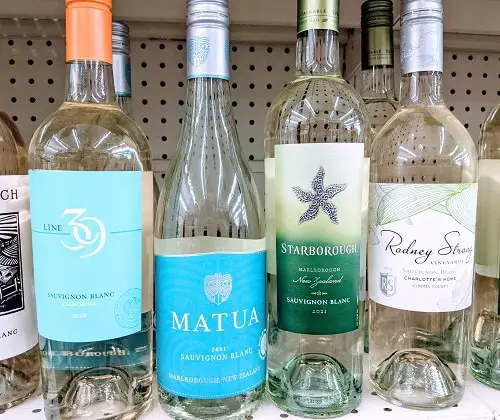
Pronunciation: soh-veen-yawn BLAHNK
Sauvignon Blanc is a high-acid white wine that has herbal, citrus, and tropical fruit notes. Today it’s made around the world and famous growing regions include Loire Valley, France, and New Zealand. Pair with seafood, salads, or solo sipper.
Here’s what you need to know about Sauvignon Blanc.
- What Kind of Wine Is Sauvignon Blanc?
- Where Does Sauvignon Blanc Wine Come From?
- Differences between Sauvignon Blanc and Semillon
- What Does Sauvignon Blanc Smell Like?
- What Does Sauvignon Blanc Taste Like?
- How to Serve Sauvignon Blanc Wine
- Sauvignon Blanc Food Pairing Suggestions
- Sauvignon Blanc vs. Other Varietals
- Notable Sauvignon Blanc Producers and Bottles to Try
- How Much to Spend on a Bottle of Sauvignon Blanc
- Sustainable Practices in Sauvignon Blanc Vineyards
- Emerging Trends and Innovations
- Final Thoughts – Sauvignon Blanc as a Must-Try White Wine Varietal
What Kind of Wine Is Sauvignon Blanc?
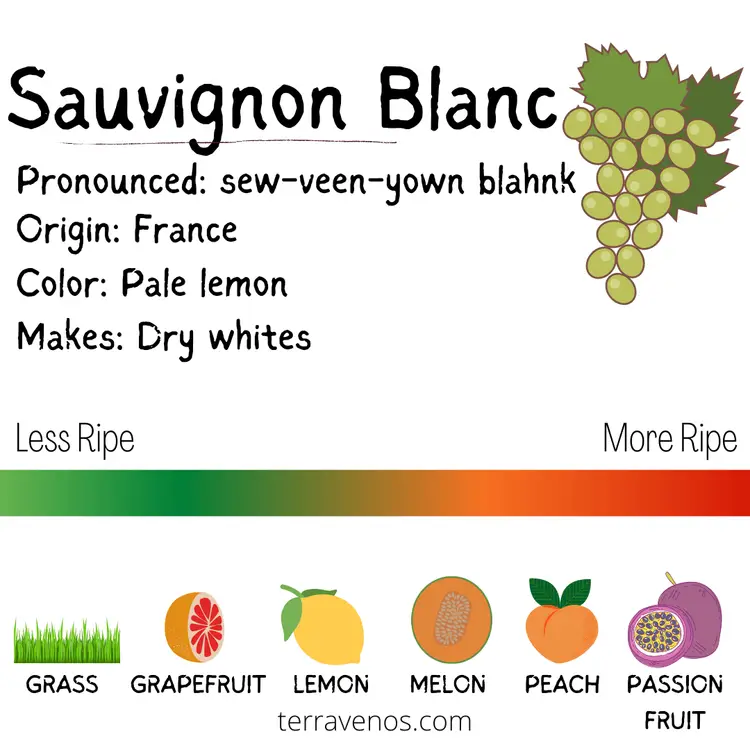
Sauvignon Blanc is a light to medium-bodied white wine with high acidity, distinct citrus and herbal flavors, and refreshing crispness. It’s known for its vibrant and aromatic characteristics that set it apart from other white wine varietals.
Sauvignon Blanc’s fruity flavors depend on whether the grapes come from a warm climate or cool climate.
Fruity Flavors of Sauvignon Blanc in Warm Climates
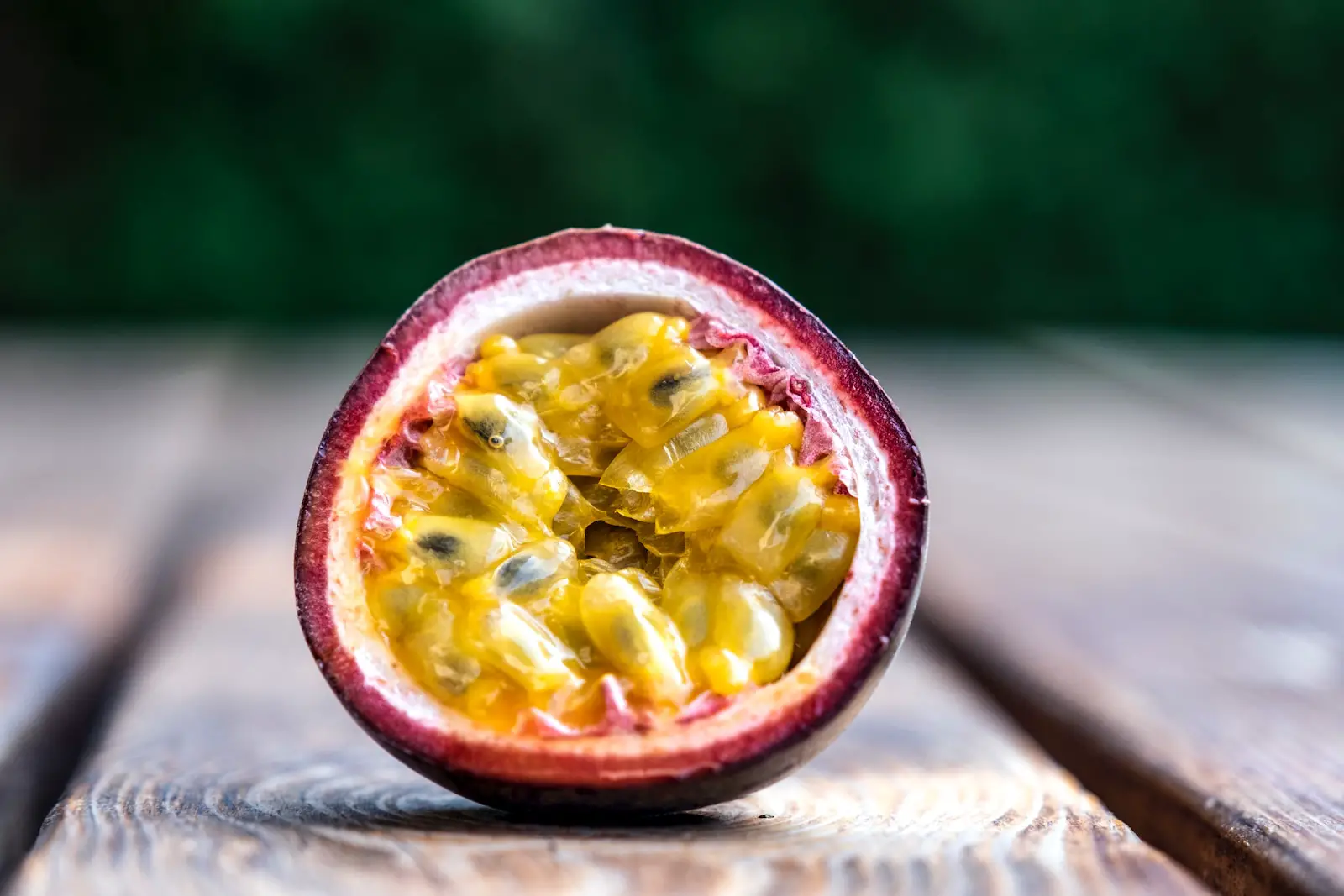
Sauvignon Blanc grapes grown in warm climates bask in the sun’s rays, leading to riper fruit flavors. These wines tend to display tropical and stone fruit notes, making them luscious and approachable
- Marlborough, New Zealand: vibrant passion fruit, ripe mango, juicy peach
- Central Valley, California: opulent pineapple, guava, citrus
- Casablanca Valley, Chile: ripe melon, papaya, apricot
Fruity Flavors of Sauvignon Blanc in Cool Climates

Sauvignon Blanc grapes grown in cooler climates experience slower ripening, preserving the wine’s crisp acidity and accentuating green fruit and herbal flavors. Additionally, in the high-altitude vineyards, Sauvignon Blanc will express more herbal and white stone fruit notes.
- Loire Valley, France: zesty lemon, lime, green apple, freshly cut grass
- Martinborough and Canterbury, New Zealand: bright citrus, grapefruit, lemon zest, distinct herbaceousness
- Adelaide Hills, Australia: delicate white peach, nectarine, subtle elderflower
Where Does Sauvignon Blanc Wine Come From?
Sauvignon Blanc originated in the Loire Valley of France and has become a renowned grape variety globally. Today, it is cultivated in various regions around the world, each contributing to its unique expression and style.
Sauvignon Blanc in the Loire Valley
The Loire Valley remains one of the most significant regions for Sauvignon Blanc production. Here, the wine showcases its herbaceous and mineral-driven notes, often accompanied by zesty citrus and green fruit flavors.
Helpful Tip: If you love Sancerre, you’re drinking Sauvignon Blanc from the Loire Valley. Here’s a list of other Sav Blanc wine regions in the Loire that are “must-trys”.
Sauvignon Blanc in New Zealand
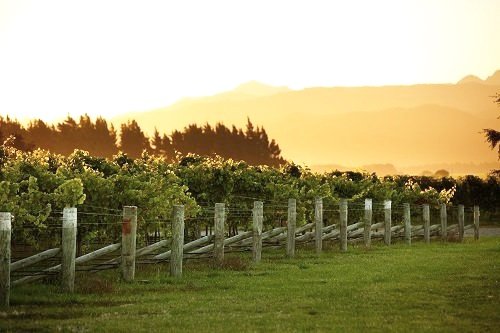
New Zealand has gained international recognition for its distinct Sauvignon Blanc. With vibrant tropical fruit aromas and zippy acidity, these wines have become iconic representations of the varietal.
Helpful Tip: Here’s how New Zealand came to dominate the global Sauvignon Blanc wine market. And why it’s so gosh darn delicious.
Differences between Sauvignon Blanc and Semillon
| Characteristics | Sauvignon Blanc | Semillon | Sauvignon Blanc & Semillon Blend |
|---|---|---|---|
| Hue | Pale to light yellow | Golden yellow to amber | Pale to golden yellow |
| Color | White | White | White |
| Aromas | Herbaceous, grassy, citrusy | Stone fruits, figs, sometimes honey | Balanced, complex |
| Sweetness | Dry to off-dry | Dry to sweet | Dry to off-dry |
| Acid | Higher | Lower | Moderate |
| Alcohol (%) | 12-14% | 12-14% | 12-14% |
| Body | Light to medium | Medium to full | Medium to full |
| Intensity | Pronounced | Moderate | Moderate |
| Key Growing Regions | Loire Valley, New Zealand, California | Bordeaux, Australia | Bordeaux, Australia |
| Classic Pairings | Seafood, salads, chicken | Chicken, pork, seafood | Shellfish, creamy dishes |
| Price Range | $10-$30 | $10-$40 | $15-$50 |
While both Sauvignon Blanc and Semillon are white grape varieties, they have notable differences. Sauvignon Blanc typically displays higher acidity and more pronounced herbaceous, grassy, and citrusy aromas. Semillon tends to have a fuller body, lower acidity and can present flavors of stone fruits, figs, and sometimes honey.
When blended together, as seen in some white Bordeaux wines, they create a well-balanced and complex wine with the best of both varietals.
What Does Sauvignon Blanc Smell Like?
Sauvignon Blanc boasts an aromatic profile that can range from grassy and herbaceous to tropical and fruity.
Common aromas include:
- freshly cut grass
- green bell pepper
- passion fruit
- grapefruit
- gooseberry
Did you know? The moment you start to bring a glass of Sav Blanc up to take a sip, you should already be smelling the different fruity flavors. It has “pronounced” aromatics. (Psst…here’s a 30-second tasting tip on why we swirl wines.)
What Does Sauvignon Blanc Taste Like?
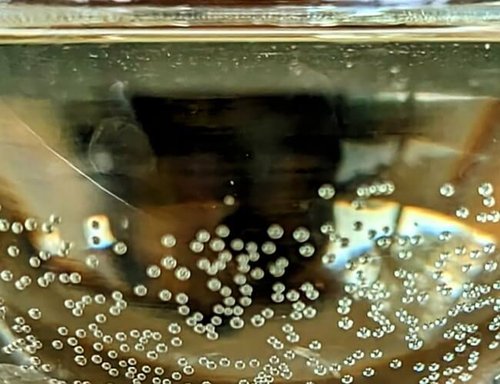
On the palate, Sauvignon Blanc is a high acid wine with a light body, medium alcohol, and intense citrus-driven flavors. Expect to salivate as you sip.
Fun Wine Fact: Many Sauvignon Blanc producers add a tiny bit CO2 right before bottling the wine. This will prickle your tongue and add to the wine’s light, refreshing body. Look for little bubbles clinging to the side of your glass.
How to Serve Sauvignon Blanc Wine
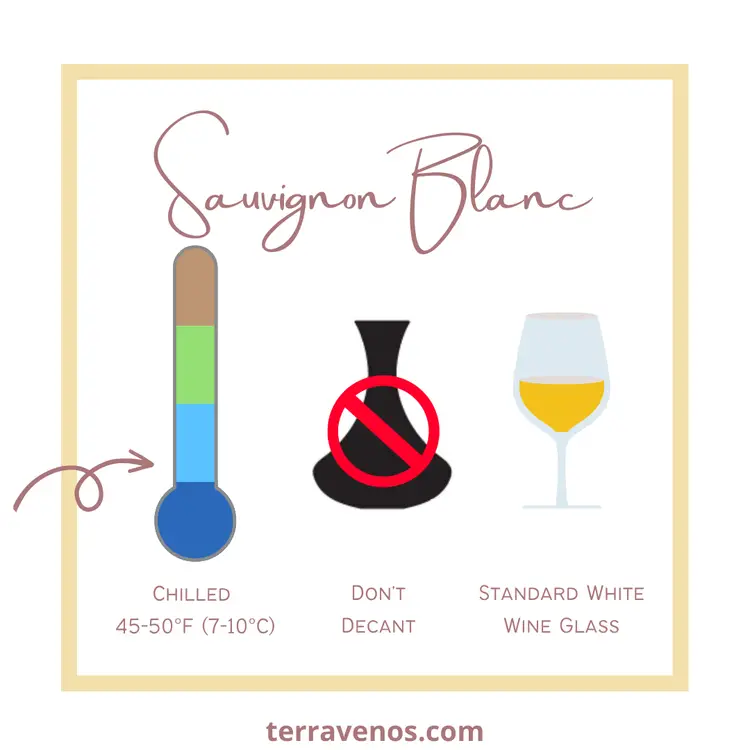
Temperature
Serve Sauvignon Blanc chilled, ideally between 45-50°F (7-10°C). The cool temperature enhances the wine’s refreshing qualities and ensures that its delightful aromas remain vibrant. (Check out this post on how long to chill your white wines for real people in the real world – no thermometers required.)
Glassware
Opt for a white wine glass with a slightly narrower bowl to concentrate the wine’s delicate aromas. The shape of the glass directs the bouquet toward your nose, enhancing the overall tasting experience.
Decanting
Sauvignon Blanc typically does not require decanting. However, if you have a more complex, oak-aged Sauvignon Blanc, decanting for 10-15 minutes can help it open up and reveal additional layers of flavor.
Aging Potential
Sauvignon Blanc is generally not meant for extended aging. It is best enjoyed young to preserve its vibrant fruitiness and fresh character.
Helpful Wine Buying Tip: If you see 2 Sauvignon Blanc’s from the same producer on the wine store shelf, 1 bottle from last year and 1 bottle from this year, choose the younger bottle.
Sauvignon Blanc Food Pairing Suggestions
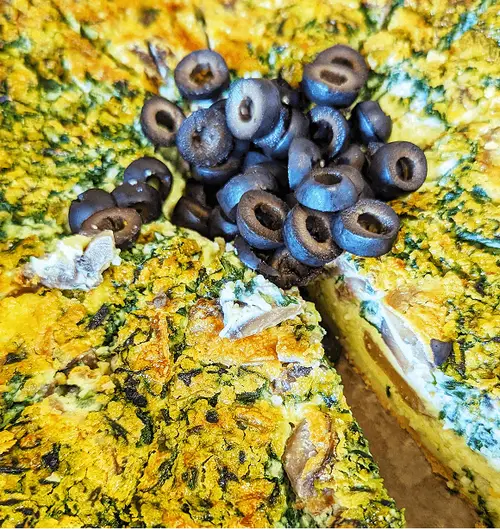
Sauvignon Blanc’s lively acidity and fruit-forward nature make it a versatile companion for a wide range of dishes. Its herbaceous and citrus notes complement a variety of flavors, enhancing the dining experience.
Quick Tips: Sauvignon Blanc Food Pairing
- Grilled shrimp with citrus salsa
- Goat cheese and herb bruschetta
- Asparagus and feta quiche
Personal Tip: When serving Sauvignon Blanc with food, try pairing it with dishes that have herbal or citrus elements. Fresh salads with vinaigrette dressings, grilled seafood, and light poultry dishes with herbal rubs complement the wine beautifully.
Sauvignon Blanc vs. Other Varietals
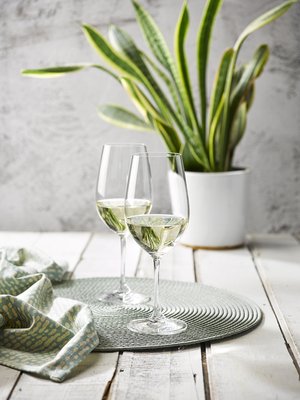
While Sauvignon Blanc shares some characteristics with other white wine varietals, such as Riesling and Albariño, it stands out with its distinctive herbal and tropical fruit aromas. Compared to Chardonnay, Sauvignon Blanc generally has higher acidity and a more refreshing, lighter body. Here are some popular comparisons:
Sauvignon Blanc vs Pinot Grigio
Sauvignon Blanc vs Chardonnay
Sauvignon Blanc vs Chenin Blanc
Notable Sauvignon Blanc Producers and Bottles to Try

When exploring Sauvignon Blanc, seek out producers known for their dedication to crafting exceptional expressions of the varietal. Some notable wineries include:
- Cloudy Bay (Marlborough, New Zealand)
- Domaine Pascal Jolivet (Loire Valley, France)
- Casa Marin (San Antonio Valley, Chile)
These wineries offer a diverse selection of Sauvignon Blanc wines, each showcasing the unique terroir of their respective regions.
Personal Tip: Don’t be afraid to explore Sauvignon Blanc from different regions. Each area imparts its own special touch to the wine, resulting in an array of delightful experiences.
How Much to Spend on a Bottle of Sauvignon Blanc
- Extreme Value: $5-$8 USD
- Everyday Value: $10 to $15 USD
- Mid-tier: $20 to $40 USD
- Premium: $40+ USD
The unique thing about inexpensive Sauvignon Blanc is that producers who specialize in Sav Blanc know their craft and their grapes well. They can make delicious drinkers even if they’re inexpensive, so don’t be afraid of drinking down (and up) the quality ladder for Sauvignon Blanc wines
Sustainable Practices in Sauvignon Blanc Vineyards
As with all viticulture, sustainable practices play a vital role in Sauvignon Blanc production. Many vineyard growers embrace organic and biodynamic farming methods, promoting environmental health and reducing chemical usage. For Sauvignon Blanc, researchers are looking into how changing vineyard practices impact the different fruit flavors in the final wine.
Emerging Trends and Innovations
The world of wine is ever-evolving, and Sauvignon Blanc is no exception. Winemakers continue to experiment with various winemaking techniques and styles to push the boundaries of tradition. Whether it’s experimenting with extended skin contact to make orange wines, oak aging, or fermentation in different vessels, these innovations contribute to a broader range of Sauvignon Blanc expressions.
Final Thoughts – Sauvignon Blanc as a Must-Try White Wine Varietal
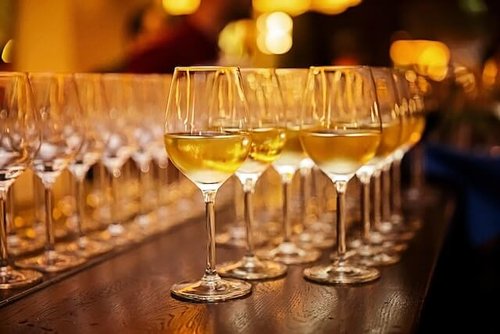
With its captivating aromas, zesty acidity, and refreshing fruit flavors, Sauvignon Blanc stands as a wine that can be enjoyed on numerous occasions and paired with a diverse array of dishes.
Here are three key takeaways to remember:
- Vibrant Aromatics: Sauvignon Blanc charms with its herbaceous, grassy, and tropical fruit aromas, making it a friendly wine for new wine drinkers.
- Food Versatility: Sauvignon Blanc’s lively acidity makes it an excellent companion for various dishes, from seafood to salads and vegetarian fare. Think about pairing it with acid-driven dishes.
- Global Expression: Sauvignon Blanc’s ability to thrive in different regions results in a fascinating range of styles, each reflecting the unique terroir of its origin.
Thirsty for More?
Head over to this post for an in-depth look at the differences between Sauvignon Blanc and Chenin Blanc.
Looking for more crisp white wines? Check out these top Albariño wines you must try.
Hosting a wine tasting? I’ve prepared a list of cold appetizers for your next white wine tasting.




